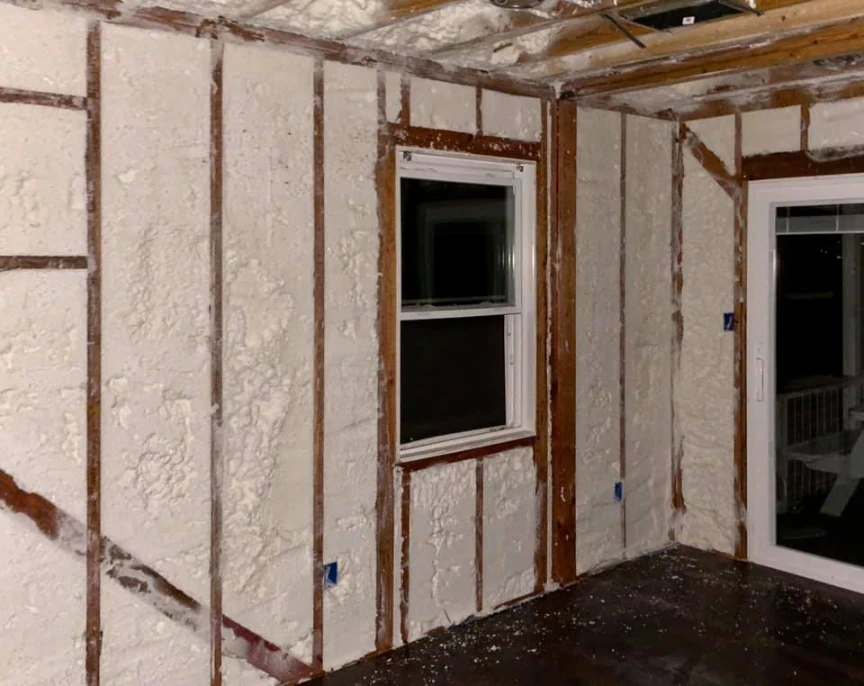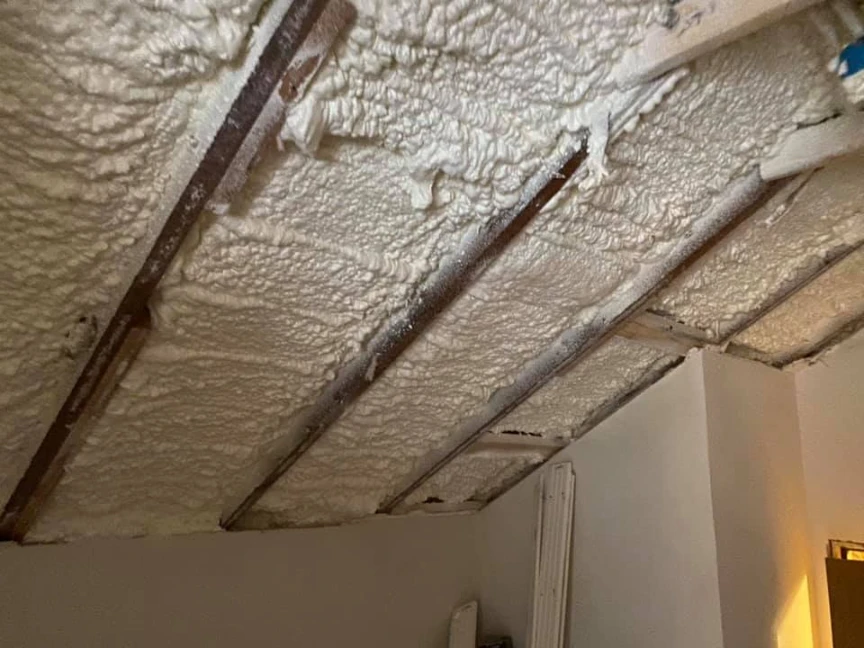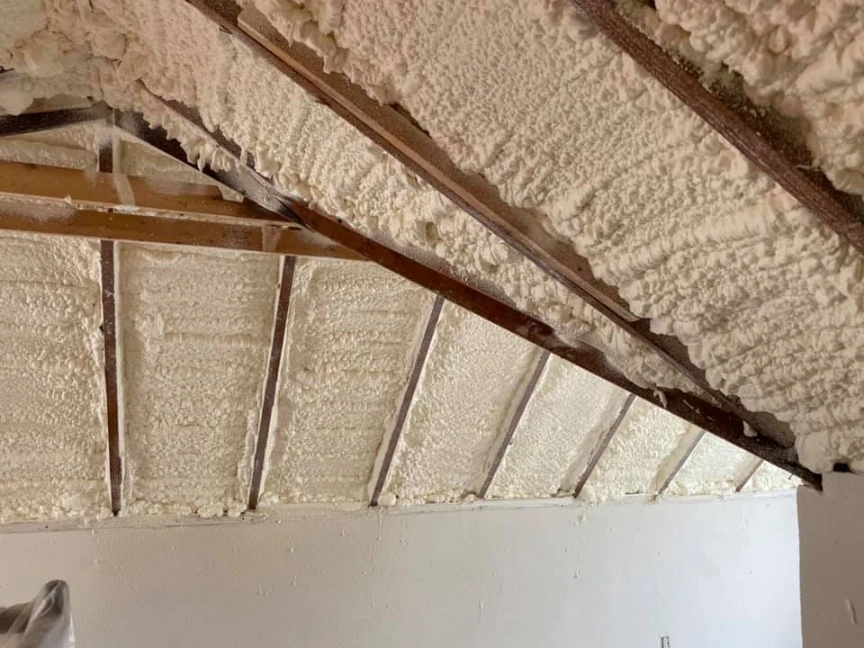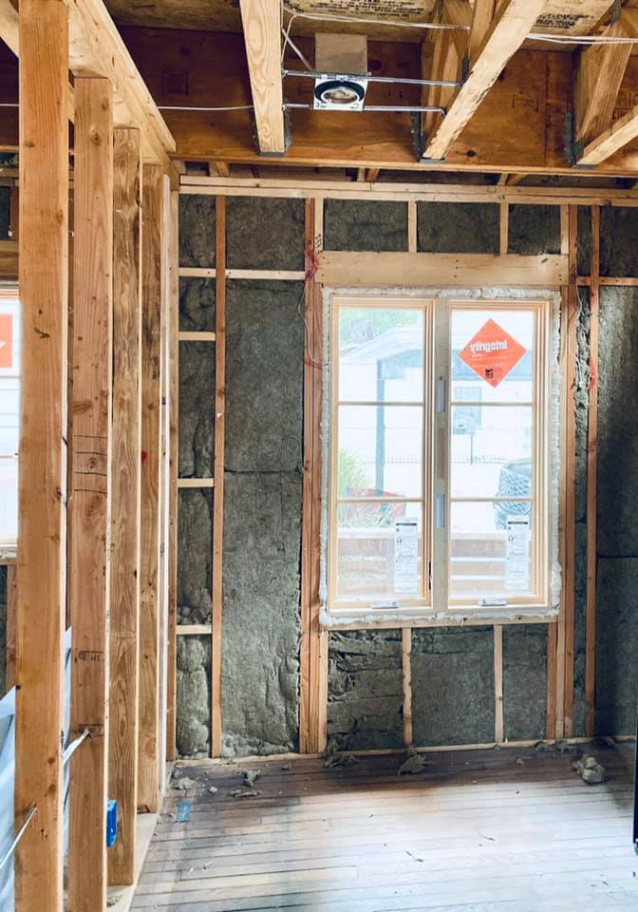Choosing the right spray foam insulation in Pflugerville, TX is the most effective way for homeowners to manage their energy budgets. Given the region’s intense summer heat and variable winters, the best strategy involves selecting materials with a high thermal resistance (R-value) that also create a robust air barrier. Materials like spray foam and high-performance blown-in fiberglass are particularly well-suited for the Central Texas climate because they excel at preventing heat transfer and stopping air leaks, which are major sources of energy waste. A properly insulated home not only lowers utility bills but also creates a more stable and comfortable indoor environment year-round.
This guide offers a detailed look at the best insulation options for Pflugerville homes, moving beyond basic concepts to provide actionable information. Drawing on extensive field experience with local homes and building science principles, this article will help you understand how different materials perform in our specific climate. You’ll learn about the importance of air sealing, how to compare insulation types, and what factors to consider before making an investment.
Understanding Pflugerville’s Climate and Your Home’s Needs
The climate in Pflugerville puts unique demands on a home’s thermal envelope. Long, hot summers with high humidity mean that for most of the year, the primary goal of insulation is to keep heat out, not in. An improperly insulated attic can reach temperatures of 150°F or higher, radiating that heat down into your living spaces and forcing your air conditioning system to work overtime.
To effectively combat this, you need to know where your home is losing the most energy. An energy audit can pinpoint these problem areas, but common culprits in local homes include:
- The Attic: This is the single largest source of heat gain in most houses.
- Walls: Under-insulated walls allow significant heat transfer from the outside.
- Crawl Spaces and Floors: Unsealed crawl spaces can introduce moisture and unconditioned air.
- Rim Joists: The area where the foundation meets the wooden frame of the house is a frequent site of air leakage.
Identifying these weak points is the first step toward building an effective insulation strategy tailored to your property.
A Breakdown of Top Insulation Materials for Central Texas
Not all insulation is created equal, especially when dealing with the Texas heat. Different materials offer different levels of performance, and the right choice depends on the application, budget, and desired outcome. The U.S. Department of Energy provides a comprehensive overview of various insulation types, highlighting their unique properties and applications.
Spray Foam Insulation
Spray polyurethane foam (SPF) is an excellent choice for the Pflugerville climate because it acts as both an insulator and an air sealant. When applied, it expands to fill every crack and crevice, creating a continuous air barrier that traditional insulation types cannot match.
- Closed-Cell Spray Foam: This is a dense, rigid material with a very high R-value (typically R-6.0 to R-7.0 per inch). It’s waterproof, adds structural strength, and is an effective vapor barrier. It’s ideal for areas like exterior walls, rooflines, and crawl spaces.
- Open-Cell Spray Foam: This foam is lighter, more flexible, and less expensive than its closed-cell counterpart. It has a lower R-value (around R-3.5 per inch) but is an exceptional sound-dampening material. It’s often used on the underside of roof decks to create a conditioned attic space.
Fiberglass Insulation
Fiberglass is a traditional and widely used insulation material made from fine glass fibers. Modern fiberglass products offer better performance than older versions.
- Batts and Rolls: These are pre-cut blankets of insulation designed to fit between standard joist and stud spacing. They are affordable but can leave gaps and voids if not installed perfectly, reducing their effectiveness.
- Blown-In Fiberglass: This loose-fill product is blown into attics or wall cavities using specialized equipment. It does a better job of filling irregular spaces than batts, which helps reduce air gaps.
Comparing Your Insulation Options
The best choice often comes down to specific performance needs and budget. Here’s a quick comparison of the most common materials used in the area.
| Feature | Closed-Cell Spray Foam | Open-Cell Spray Foam | Blown-In Fiberglass |
|---|---|---|---|
| Typical R-Value | R-6.5 per inch | R-3.5 per inch | R-2.5 per inch |
| Air Sealing | Excellent | Excellent | Fair |
| Moisture Barrier | Yes | No (permeable) | No |
| Sound Dampening | Good | Excellent | Good |
| Cost | High | Moderate | Low to Moderate |
The Critical Role of Air Sealing
You can have the highest R-value insulation available, but its performance will be severely compromised if your home has air leaks. Air leakage allows conditioned air to escape and unconditioned air to enter, creating drafts, driving up energy costs, and introducing dust, pollen, and moisture. According to estimates from ENERGY STAR, sealing air leaks and adding insulation can help a homeowner save up to 10% on their annual energy bills.
Spray foam’s main advantage is that it seals leaks as it insulates. For homes using other insulation types like fiberglass or cellulose, a separate air sealing step is necessary before the insulation is installed. This involves using caulk, weatherstripping, and specialized sealants to close gaps around plumbing, wiring, windows, doors, and attic hatches.
Bonus Tip: A simple way to find larger air leaks is to carefully run your hand along the edges of windows, electrical outlets, and exterior doors on a windy day. If you can feel a draft, you have an air leak that needs sealing.

Things to Consider Before Making a Decision
Choosing insulation is a significant investment in your home’s comfort and efficiency. Before you decide, think through these key factors.
Initial Investment vs. Long-Term Savings
Materials like closed-cell spray foam have a higher upfront cost but provide superior performance that can lead to greater energy savings over the life of the home. It’s helpful to calculate the potential return on investment. Consider how long you plan to live in the house and how much you stand to save on monthly energy bills.
Your Home’s Structure
The age and construction of your home will influence your insulation choices. An older home with irregular framing may benefit from a product like blown-in insulation or spray foam in Pflugerville, TX that can fill non-standard cavities. The accessibility of your attic and crawl space will also determine which installation methods are practical.
Local Building Codes
Insulation projects must comply with local building regulations. Pflugerville follows international building codes that specify minimum R-value requirements for different parts of a home, such as attics, walls, and floors. Ensuring your project meets or exceeds these codes is essential for safety, performance, and home resale value.
Making the Right Choice for Your Home
Upgrading your home’s insulation is one of the smartest investments you can make to lower your energy consumption in Pflugerville. The best approach is to match the insulation material and R-value to our demanding climate, your home’s unique construction, and your long-term financial goals. By focusing on both high-quality insulation and thorough air sealing, you can create a more comfortable, energy-efficient home that provides savings for years to come. Before making a final choice, carefully evaluate your home’s current performance, identify problem areas, and consider the long-term benefits of a high-performance insulation system.
Get a Professional Assessment
Navigating the options for home insulation can be complicated. For a detailed evaluation of your home’s specific needs and a clear recommendation on the best path forward, it’s wise to consult with an expert. The team at Stellrr Insulation & Spray Foam can provide a thorough assessment to help you make an informed decision. For more information or to schedule a consultation, please call (512) 710-2839.
Sources
- U.S. Department of Energy – Provides detailed descriptions of different insulation materials, their properties, and common uses in residential and commercial buildings.
- ENERGY STAR – Offers data and guidance on the benefits of air sealing and insulation, including estimated energy savings for homeowners.
FAQS
What is the recommended R-value for attics in Pflugerville?
Pflugerville is in Climate Zone 2. For this zone, ENERGY STAR recommends an R-value of R30 to R60 for an uninsulated attic and R30 to R49 for an attic that already has some insulation.
Can new insulation be installed over old insulation?
In many cases, yes. If the existing insulation is in good condition (not wet, moldy, or heavily compressed), new loose-fill insulation can often be added on top to reach the desired R-value. However, if the old material is damaged, it should be removed first.
How does insulation improve indoor air quality?
By creating an effective air barrier, certain types of insulation like spray foam can reduce the amount of outdoor allergens, dust, and pollutants that enter your home. This can lead to a healthier indoor environment, especially for people with allergies or respiratory issues.
What is the difference between open-cell and closed-cell spray foam?
The main difference lies in their cell structure. Open-cell foam has cells that are not fully encapsulated, making it soft, flexible, and air-permeable. Closed-cell foam has tightly packed, sealed cells, making it rigid, dense, and a barrier to both air and moisture.




